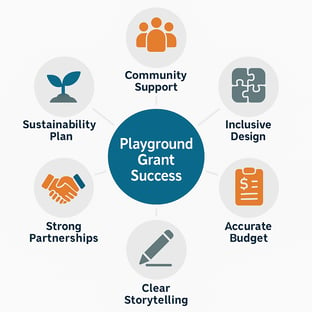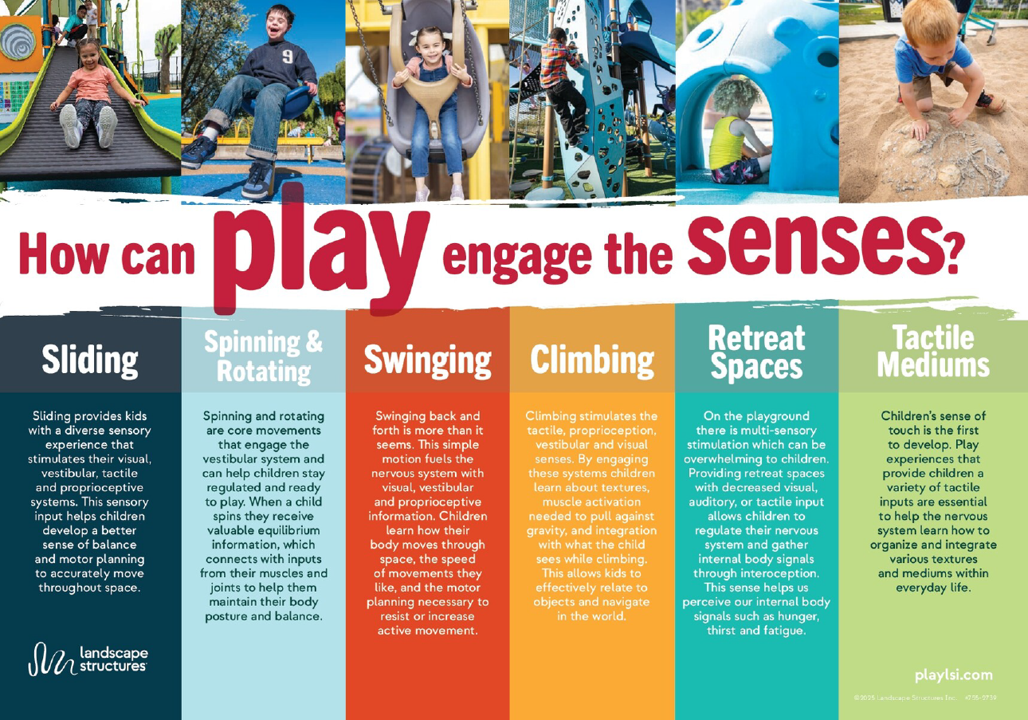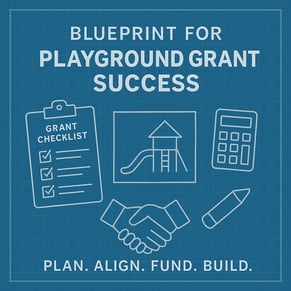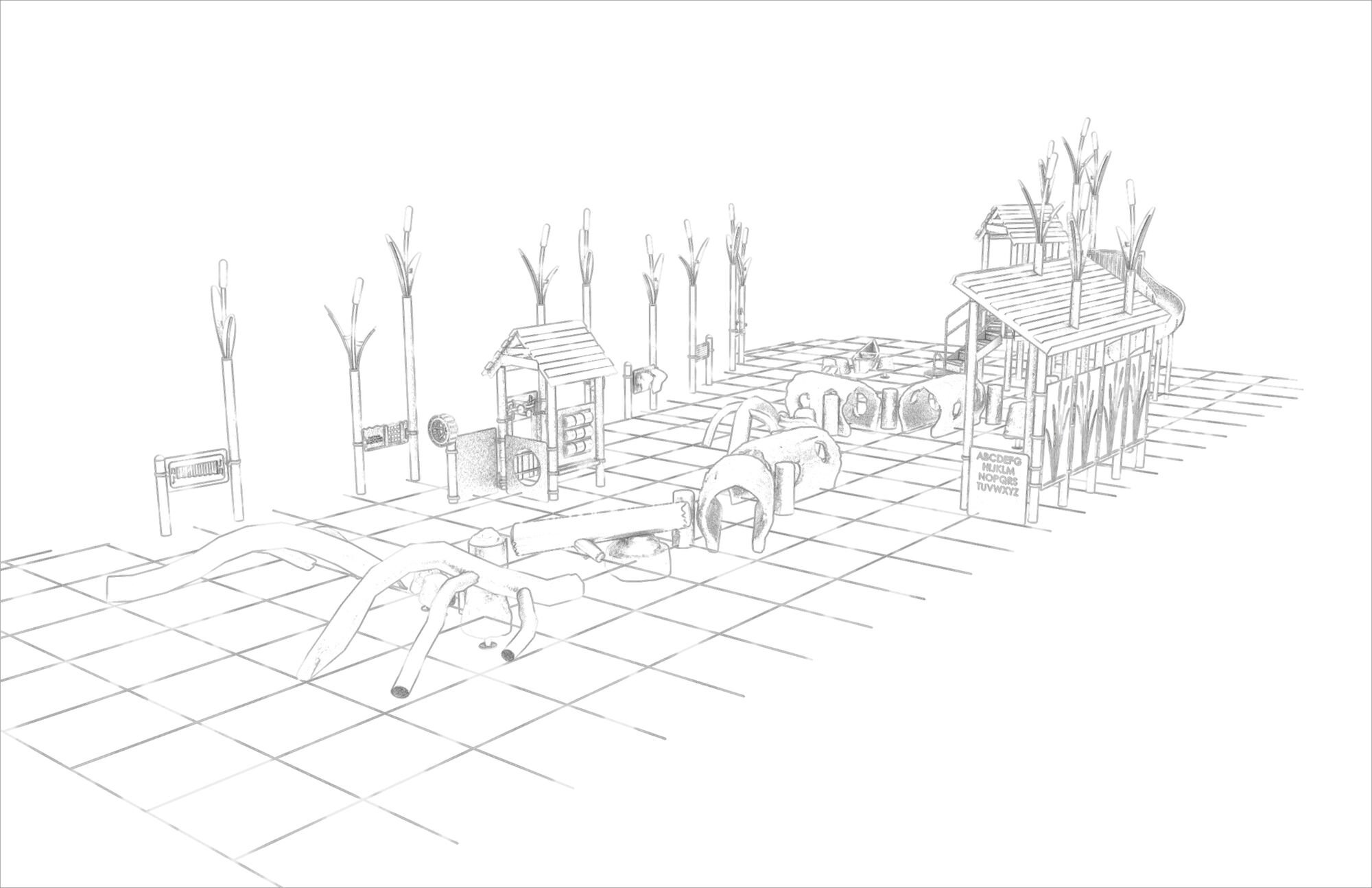Grant Success: Turning Common Mistakes into Winning Strategies
Securing a playground grant can be the key to transforming a vision into a vibrant community space. Schools, municipalities, and nonprofits across the country have successfully turned their dreams into funded realities by understanding what makes a proposal stand out. The difference between a successful proposal and one that’s rejected often comes down to avoiding a handful of critical, but preventable, mistakes. A strong proposal demonstrates meticulous attention to detail and a clear connection between your project and the funder’s mission.
Below are proven approaches to create a compelling, credible, and funder-aligned proposal that strengthens your case and maximizes your chances for success.
 Start Strong: Build a Foundation of Readiness and Eligibility
Start Strong: Build a Foundation of Readiness and Eligibility
Winning applications begin long before the submission deadline. Establishing early organization, understanding eligibility, and following every guideline precisely are the cornerstones of a successful grant process.
- Plan ahead. Create an internal timeline with buffer days for review and revisions. A late submission is the quickest way to be disqualified, as funders strictly enforce deadlines. Start early, build in internal review dates, and plan ahead to avoid last-minute problems.
- Follow directions exactly. If a funder specifies a file format, page limit, or submission portal, treat it as non-negotiable. If the guidelines specify formatting, page limits, required attachments, or even small details such as paper clips over staples, follow them exactly. Skipping a requirement signals carelessness and a lack of professionalism.
- Confirm eligibility early. Applying for a grant you’re not qualified for wastes valuable time and energy.
- Prepare complete materials. Missing documents or signatures can disqualify an otherwise outstanding application.
Being proactive, thorough, and organized ensures your project moves smoothly through the first round of reviews. Staying organized, reading the fine print, and preparing early can keep your application from being dismissed before it’s even considered.
Craft a Compelling Story that Aligns with the Funder’s Mission
Beyond the basics, the real test is whether your story resonates with reviewers. One of the most frequent errors is submitting a one-size-fits-all proposal. Each grantor has unique priorities, eligibility rules, and reporting expectations, and sending the same boilerplate application to multiple programs signals a lack of alignment.
The most persuasive proposals are tailored to each grantor’s specific goals. Funders want to see alignment between your community’s needs and their mission.
- Research deeply. Weak alignment with the funder’s priorities is one of the biggest issues. Go beyond generalities—it’s not enough to know a foundation funds “education” or “health”; you need to understand if they focus on K–12 vs. adult programs, inclusive play vs. general recreation, or high-poverty vs. affluent communities. This alignment should shine through your proposal from the opening paragraph.
- Show impact. Lead with how the project benefits your community, not just your organization. Replace “we need funding” with “this playground will give 7,000 children a place to play, connect, and grow.” Funders want to know how their investment will deliver benefits to people, not just cover operational costs. Frame your proposal from the perspective of the funder and your community. Clearly and concisely define the problem you’re addressing and support it with evidence — statistics, surveys, or testimonials — to make the need compelling. Even if you’re requesting operating support, spell out the benefits to your constituents.
- Be realistic and achievable. Demonstrate that your timeline, budget, and team capacity match the scale of your proposal. Overly ambitious or unrealistic plans also raise red flags. Reviewers will question feasibility if your goals are too broad or your team’s experience doesn’t match the scope.
- Show local support. Applications also benefit from evidence of community support. Grant reviewers look for signs of local commitment, and proposals lacking letters of support, volunteer plans, or matching funds may be seen as lower priority. Engaging your PTO, local businesses, and civic groups early and documenting volunteer pledges, fundraising contributions, or in-kind donations helps demonstrate broad support. Include letters, volunteer commitments, and matching funds that signal community investment.
- Plan for sustainability. Explain how the playground will be maintained and supported long after the grant period ends. Funders want to know if their investment will create lasting impact. Explain how your project will continue after the grant period ends, whether through integration into core operations, alternative funding, or partnerships.
Reviewers want to know if your project is both impactful and feasible. Clear alignment, achievable goals, and a focus on community benefit make your proposal stronger and more compelling. Successful applicants thoroughly review a grant’s guidelines and mission and show clearly how their playground project supports the funder’s goals, whether it’s promoting health, accessibility, STEM learning, or environmental sustainability. Investing time in researching grants early and using resources such as municipal planning tools or the Landscape Structures® grant resources ensures you’re applying for opportunities that best match your project.
Design for Inclusion and Long-Term Value
Many applicants also overlook the growing emphasis on inclusive design. Funders increasingly prioritize equity and access, and proposals that fail to highlight inclusive elements risk being overlooked. Demonstrate your commitment to creating play environments that serve children, caregivers, and visitors of all ages and abilities.
- Highlight inclusive design features such as accessible surfacing, sensory panels, transfer stations, and multigenerational gathering areas.
- Include partnerships with design experts like Whirlix Design, who can provide renderings, cost estimates, and community impact projections that strengthen your case.
- Reference data and research showing how inclusive play benefits physical, social, and emotional development.
Inclusive design isn’t just good practice — it’s a core selection criterion for many modern grant programs.
 Build a Budget and Evaluation Plan That Inspires Confidence
Build a Budget and Evaluation Plan That Inspires Confidence
Numbers tell a powerful story. A transparent and accurate budget demonstrates accountability and preparedness. Funders want reassurance that you can responsibly manage funds and demonstrate results. Weak or sloppy budgets and evaluation plans are a leading cause of rejection.
- Align every expense with a project goal and include professional cost estimates.
- Avoid unrealistic figures that undercut your credibility. Overinflated or underestimated costs raise red flags. Provide realistic, transparent numbers.
- Double-check math and formatting — even minor errors can raise red flags.
- Include a measurable evaluation plan. Funders expect measurable outcomes. Use SMART goals (Specific, Measurable, Achievable, Relevant, Time-bound) to track outcomes and report success.
A clean, realistic budget paired with a strong evaluation plan demonstrates that your project is well thought out, accountable, and worth the investment. Applications relying only on anecdotes instead of facts and figures can appear unconvincing. Gathering demographic, health, and usage data—such as playground accessibility audits, school enrollment numbers, or community surveys—strengthens your case. Partnering with a design team like Whirlix Design up front can further enhance your application by providing renderings, cost estimates, and usage projections that illustrate impact.
Present with Professionalism and Clarity
Your proposal’s presentation reflects your organization’s professionalism. How your proposal reads can be as important as what it says. Reviewers often scan hundreds of applications, and clarity, professionalism, and polish make a lasting impression. A well-structured, error-free submission communicates attention to detail and respect for the reviewer’s time.
- Write in clear, accessible language — avoid jargon and technical terms.
- Proofread meticulously or enlist a colleague to review for clarity and flow. Typos, grammar mistakes, and formatting issues signal carelessness. Always proofread and seek outside review.
- Ensure that your summary, budget, and narrative tell the same story. Your narrative, budget, and summary must align and tell a cohesive story. Conflicting details confuse reviewers and weaken your case.
- Craft a concise executive summary that captures your vision, impact, and request amount. Often the first (or only) section read a well written executive summary is your door opener. Write it last, and make it concise, compelling, and fully reflective of the proposal.
- Don’t forget the “ask”: State the amount requested clearly and early and calibrate it to the funder’s typical award size.
Professional, polished writing builds reviewer confidence and ensures your message comes through clearly. The way your proposal reads can be just as important as the content itself. And above all, don’t talk yourself out of applying. There’s never a perfect time to pursue a grant, but you’ll never receive one if you don’t try.
 Partnering for Success
Partnering for Success
Every successful grant begins with collaboration. Working with experts who understand both design and funding can elevate your proposal from good to great.
At Whirlix Design, we help communities strengthen their playground grant applications with conceptual designs, cost estimates, and planning resources that bring ideas to life. Our partnership with Landscape Structures® gives you access to invaluable tools like their Playground Grants Resources page — an ongoing, curated resource featuring grant listings and links to request the complete online grant resources.
Together, we can turn your vision into a funded, inclusive, and inspiring play space that benefits your entire community.

